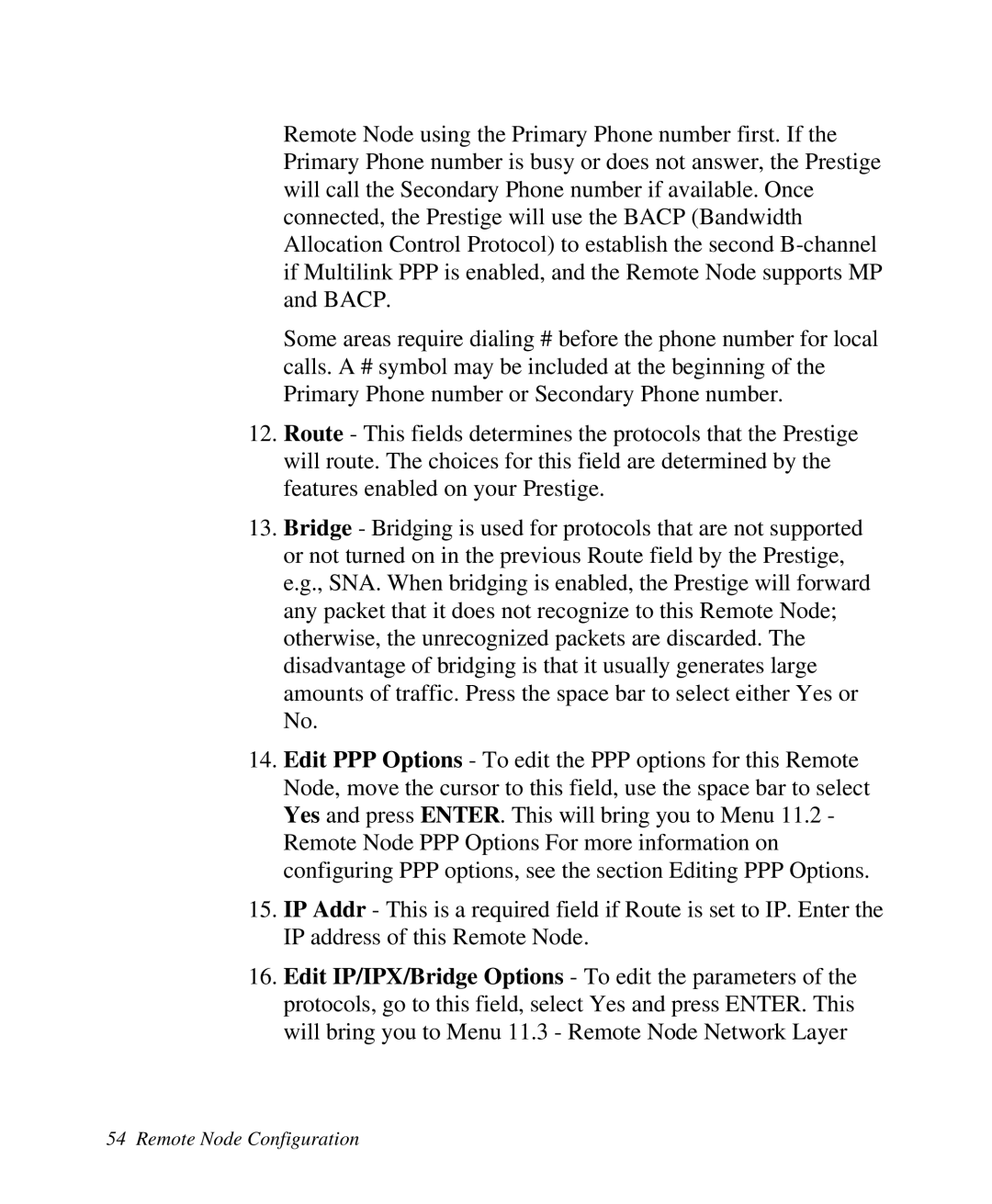Remote Node using the Primary Phone number first. If the Primary Phone number is busy or does not answer, the Prestige will call the Secondary Phone number if available. Once connected, the Prestige will use the BACP (Bandwidth Allocation Control Protocol) to establish the second
Some areas require dialing # before the phone number for local calls. A # symbol may be included at the beginning of the Primary Phone number or Secondary Phone number.
12.Route - This fields determines the protocols that the Prestige will route. The choices for this field are determined by the features enabled on your Prestige.
13.Bridge - Bridging is used for protocols that are not supported or not turned on in the previous Route field by the Prestige, e.g., SNA. When bridging is enabled, the Prestige will forward any packet that it does not recognize to this Remote Node; otherwise, the unrecognized packets are discarded. The disadvantage of bridging is that it usually generates large amounts of traffic. Press the space bar to select either Yes or No.
14.Edit PPP Options - To edit the PPP options for this Remote Node, move the cursor to this field, use the space bar to select Yes and press ENTER. This will bring you to Menu 11.2 - Remote Node PPP Options For more information on configuring PPP options, see the section Editing PPP Options.
15.IP Addr - This is a required field if Route is set to IP. Enter the IP address of this Remote Node.
16.Edit IP/IPX/Bridge Options - To edit the parameters of the protocols, go to this field, select Yes and press ENTER. This will bring you to Menu 11.3 - Remote Node Network Layer
